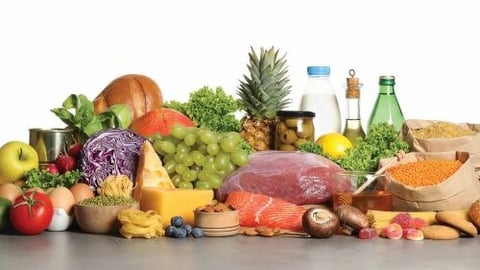The Intersection of Convenience and Healthful Eating
When it comes to food choices, consumers value both convenience and healthfulness. Yet many people believe that these attributes are mutually exclusive. Fortunately, retailers and retail dietitians can show shoppers how convenience and healthful eating can go hand in hand.
The Need for Convenience
While taste (85%) and price (76%) make the most impact on consumers’ food and beverage purchase decisions, healthfulness (62%) and convenience (57%) come next, according to the 2024 IFIC Food & Health Survey from the International Food Information Council. Further, as household income increases, the influence of healthfulness as a purchase driver also increases, reaching 75% for those with the highest household incomes.
[RELATED: Get S.M.A.R.T With Healthy Lifestyle Goals]
Lack of time due to demanding schedules can drive people who want to eat healthfully toward less nutritious convenience options instead. For instance, 74% of consumers say that they’d be interested in eating a healthier diet if it were more convenient, and 77% say that some days, they’re too exhausted to cook after work, according to a 2024 survey conducted by Talker Research and commissioned by Kevin’s Natural Foods. The convenience options chosen most often by time-strapped consumers are sandwiches (42%), fast food (37%), microwavable dinners (33%), frozen convenience foods and meals (31%), and ramen noodles (29%).
Fortunately, retailers and retail dietitians can steer shoppers toward foods that are both convenient and nutritious.
Fresh Misconceptions
In the IFIC survey, consumers were asked to rank categories of food in order of healthfulness. Consumers overwhelmingly view fresh food as the healthiest (91%), with the following more convenient options trailing behind: dried (47%), frozen (39%), prepared (37%), canned (35%) and packaged (23%) foods.
However, many convenience foods are nutrition-packed, too. Dried fruit, frozen fruits and vegetables, canned beans and tuna, nut butters, cheese sticks, yogurt, and whole grain breads and cereals are just a few examples found throughout the aisles. Your retail dietitians can show shoppers that more convenient foods can also be healthful.
[RELATED: When Fast Food Is Good Food]
The Retail Dietitian Factor
Retail dietitians are highly trusted sources of food and nutrition information, and they’re experts at designing educational programs and promotions based on shoppers’ lifestyles, food preferences, health status and budgets.
Dietitians can teach busy shoppers how to plan, shop for and prepare convenient and nutritious meals and snacks through store tours, cooking demos, sampling events and counseling sessions. They can give tips to streamline meal prep by creatively using “planned over” foods throughout the week, freezing extra servings for future meals, and using time-trimming appliances like air fryers and electric pressure cookers. Dietitians can also offer guidelines on choosing frozen meals aligned with shoppers’ health goals and highlight options from the prepared food case.
Don’t stop there, however. In your quest to get shoppers to eat more healthfully – even on the go – leverage technology as well. In the IFIC survey, about two-thirds (65%) of respondents agree that online tools and mobile apps can help them improve their diet and physical activity, with younger generations and those with higher household incomes more likely to agree. Feature dietitian-developed quick and healthful meal plans, shopping lists, recipes, and cooking tips on your website and app.






